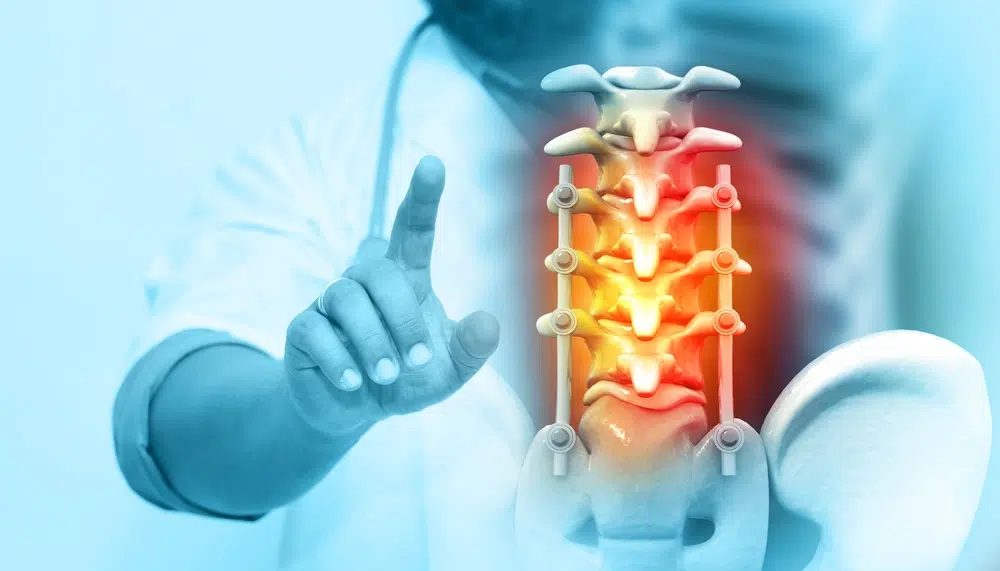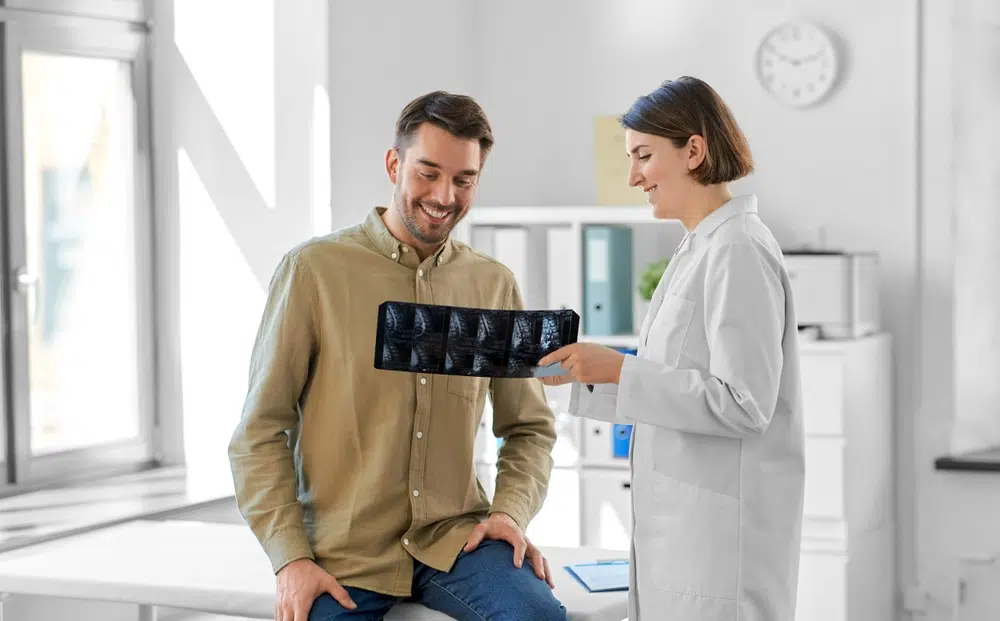Minimally invasive spine surgery has changed how patients experience treatment for chronic back pain and other spine conditions. Instead of large incisions and lengthy hospital stays, these modern surgical procedures use small incisions, specialized instruments, and advanced imaging to target problem areas in the spinal column with precision. The result is typically less tissue disruption, reduced recovery time, and an earlier return to daily life compared to traditional open surgery.
For patients wondering about the types of minimally invasive spine surgery available today, options include procedures such as microdiscectomy, spinal decompression, spinal fusion, corpectomy, and even advanced techniques like lumbar disc arthroplasty or spinal cord stimulator implantation. Each approach is designed to address a specific spine condition while minimizing the impact on surrounding tissue.
Dr. Alex Taghva, a board-certified neurosurgeon in Mission Viejo, CA, is highly trained in these advanced procedures. His expertise and commitment to patient care ensure that individuals receive safe, effective treatment options tailored to their needs.

How Minimally Invasive Spine Surgery Can Improve Your Back Pain and Your Quality of Life
Living with chronic back pain, spinal stenosis, degenerative disc disease, or other spine conditions can interfere with nearly every aspect of daily life. Minimally invasive approaches offer patients the ability to seek relief without the extensive downtime and discomfort often associated with open surgery. By using small incisions and muscle-sparing techniques, these procedures typically reduce tissue disruption and blood loss, which can support a smoother recovery. Many patients also appreciate that certain procedures may be performed in an outpatient setting, depending on the specific condition and overall health.
Benefits Patients Often Notice
While every person’s situation is unique, patients commonly report practical, day-to-day improvements after minimally invasive care. Smaller incisions and targeted access often translate to less postoperative discomfort and a quicker return to routine activities. In many cases, people can begin gentle movement sooner under guidance, which helps maintain flexibility and confidence as healing progresses.
- Shorter recovery periods and less time in the hospital
- Reduced muscle and tissue disruption from small incisions
- Lower risk of infection and less blood loss than with open surgery
- Faster return to work, school, or recreational activities
- Smaller scars and earlier, guided mobilization

When performed by an experienced spine surgeon like Dr. Taghva, these procedures can address spinal instability, compressed spinal nerves, or herniated discs while allowing patients to regain mobility and enjoy a more active lifestyle.
Emotional and Lifestyle Benefits of Minimally Invasive Spine Care
Beyond physical relief, many patients describe feeling more optimistic once pain is better managed and movement becomes easier. Being able to sit through a meeting, walk the neighborhood, or spend time with family without constant discomfort can make daily life feel more manageable. For patients in Mission Viejo and across Orange County, choosing a minimally invasive approach often reduces fear around “having back surgery,” creating a clearer path toward recovery and a return to the activities that matter most.
Patients Testimonials
Types of Minimally Invasive Spine Surgery for Spine Care
Minimally invasive spine surgery is not a single procedure but rather a collection of advanced surgical techniques. Each option is carefully chosen based on the patient’s condition, location of the problem in the cervical spine, thoracic spine, or lumbar spine, and overall health.
Tubular Retractor Method for Targeted Treatment
One of the most common minimally invasive approaches uses tubular retractors. These are small, cylinder-shaped tools that gently separate the muscles instead of cutting through them. This allows the surgeon to access the spinal canal or vertebrae through a small incision. Tubular retractors are frequently used in procedures such as microdiscectomy or spinal decompression surgery, helping relieve nerve pressure without major tissue disruption.
Percutaneous Method with Smaller Incisions
The percutaneous method relies on thin, specialized instruments inserted through tiny skin incisions. Surgeons often use this approach for spinal instrumentation, such as placing screws and rods during a spinal fusion procedure. Because the incisions are so small, recovery is often quicker, and scarring is minimal compared to open surgery.
Direct Lateral Access for Spinal Alignment Issues
A lateral interbody fusion, sometimes called a direct lateral approach, is performed through the patient’s side. This technique allows access to the lumbar spine while avoiding the major back muscles. It is often used to treat conditions like scoliosis, spondylolisthesis, or degenerative disc disease, restoring spinal alignment and stability without the need for a large posterior incision.
Thoracoscopic Access for Upper Spine and Spinal Cord Conditions
In certain cases involving the thoracic spine, a thoracoscopic approach may be considered. This technique uses small incisions between the ribs along with a camera and specialized instruments to reach the spinal column. While not as commonly performed as lumbar or cervical procedures, it can provide a less invasive option for select patients with conditions affecting the upper spine. In these situations, the goal is to reduce disruption to surrounding tissue while addressing pressure on the spinal cord or treating structural concerns. Patients who may benefit from this type of approach are carefully evaluated to determine whether it is the safest and most effective option for their needs.
Discectomy to Relieve Pressure from a Herniated Disc
A discectomy is one of the most well-known types of minimally invasive back surgery. It is designed to remove part of a herniated disc that is pressing on spinal nerves. By using an endoscopic or microscopic approach, surgeons can relieve symptoms such as sciatica, leg weakness, or numbness caused by nerve compression. Microdiscectomy procedures are particularly common and are known for their effectiveness and shorter recovery times.
Spinal Decompression: Laminectomy, Foraminotomy, and Select Corpectomy for Severe Compression
When spinal stenosis causes narrowing of the spinal canal, patients often suffer from leg pain, cramping, or difficulty walking. Minimally invasive spinal decompression procedures like laminectomy (removing part of the vertebra) or foraminotomy (widening the passage where nerves exit) can relieve pressure on the spinal cord and nerves. These techniques use smaller incisions and specialized tools to improve spinal canal space while limiting recovery challenges.
Transforaminal Lumbar Interbody Fusion (TLIF) for Stability
Spinal fusion surgery remains an important option for patients with spinal instability or severe degenerative disc disease. With minimally invasive TLIF, surgeons access the spine through a small incision, remove damaged disc material, and insert bone grafts or implants to fuse the vertebrae. This stabilizes the spinal column while preserving surrounding muscles and tissue. TLIF is often recommended for patients with spondylolisthesis or chronic back pain that has not improved with nonsurgical care.
Other Specialized Procedures
- Lumbar disc arthroplasty (artificial disc replacement): In some situations, this procedure may be considered as an alternative to spinal fusion. It involves replacing a damaged lumbar disc with an artificial implant designed to maintain more natural motion in the spine. While not appropriate for every patient, it can help reduce back pain and preserve spinal mobility in carefully selected cases.
- Corpectomy: Removes a portion of a vertebra to relieve spinal cord compression, often followed by fusion for stability.
- Spinal cord stimulator implantation: Places a device that delivers electrical impulses to the spinal cord, reducing chronic back pain and improving quality of life.
- Tumor resection: For certain spinal tumors, minimally invasive techniques may sometimes be used to support removal while preserving as much healthy tissue as possible. The approach depends on the tumor’s type and location, and decisions are made carefully to ensure patient safety and long-term outcomes.
Each of these surgical procedures represents part of a growing field of advanced spine care, designed to improve patient outcomes with less impact on the body.

Best Neurosurgeon in Orange County
Dr. Taghva specializes in the treatment of neck pain, low back pain, sciatica, brain tumors, Parkinson’s disease, as well as other conditions requiring brain or spine surgery.

Who Is a Good Candidate for Minimally Invasive Back Surgery?
Not every patient requires surgery, but when conservative treatments such as physical therapy, medications, or injections no longer provide relief, minimally invasive techniques may be an option. Good candidates often include:
- Patients with persistent back pain or spinal instability
- Individuals with herniated discs or degenerative disc disease
- Those experiencing spinal stenosis or nerve compression symptoms
- Patients with spinal tumors requiring resection
- Individuals with scoliosis or other spinal deformities affecting quality of life
A thorough evaluation with an experienced spine surgeon is essential. Imaging tests such as MRI or CT scans help confirm whether a minimally invasive approach is appropriate.
Why Orange County Patients Trust Dr. Alex Taghva for Advanced Spine Care
Patients across Orange County, including Mission Viejo and the surrounding areas, turn to Dr. Alex Taghva for advanced spine care because of his training, experience, and dedication to patient outcomes. Dr. Taghva is a board-certified neurosurgeon specializing in minimally invasive spine surgery, deep brain stimulation, and other advanced neurosurgical procedures.
By combining the latest technology with a patient-centered approach, Dr. Taghva ensures that each individual receives treatment tailored to their unique condition. His expertise in spinal fusion procedures, microdiscectomy, and spinal decompression surgery has helped countless patients regain mobility and return to the activities they enjoy.
Schedule Your Minimally Invasive Spine Surgery Consultation With Dr. Alex Taghva Today
If you are struggling with chronic back pain, herniated discs, or other spinal conditions that affect your daily life, minimally invasive spine surgery may provide the relief you need. With smaller incisions, reduced recovery times, and modern techniques designed to preserve healthy tissue, these procedures offer patients a safer alternative to traditional surgeries.
Dr. Alex Taghva is proud to provide expert spine care for patients in Mission Viejo and throughout Orange County. Scheduling a consultation is the first step toward learning which types of minimally invasive back surgery may be right for you.
Call Dr. Taghva’s office today or request an appointment online to explore your options and take the first step toward lasting relief and improved quality of life.
